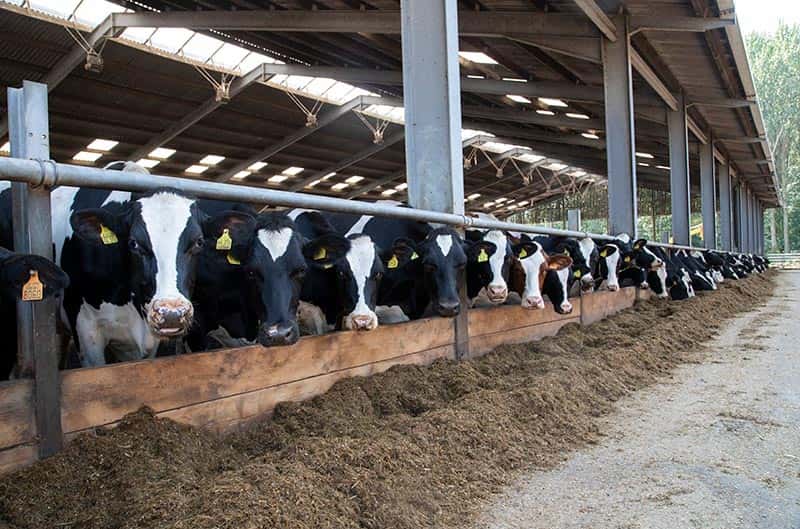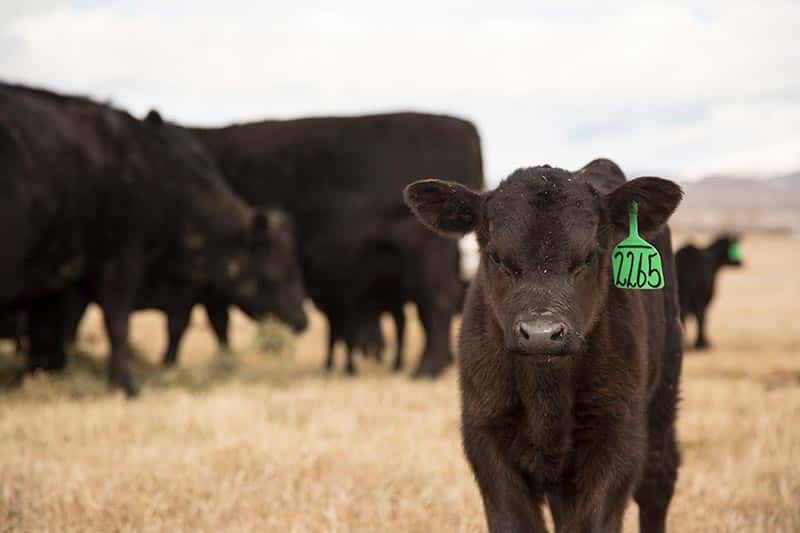Big data is ready for the farm. But is the farm ready for big data?
84 percent of U.S. farmers who responded to a recent Stratus Ag Research survey said they have high-tech equipment that captures reams of data from livestock, planting, harvesting or crop protection operations. Yet, only 42 percent of them are transferring this information to a field data management software program for further analysis.
The question is: How can producers harness all of this information to drive efficiency and profitability once it has been collected?
KEENAN, a technological entrepreneur of diet feeders, stepped up to this challenge by expanding into farm data analysis with InTouch technology, which delivers solutions on-farm in real time.
“We've been involved with the internet of things (IoT) since about 2011,” said Conan Condon, director of KEENAN’s InTouch system. “At that stage, there wasn't much connectivity. There were about 12 million connected devices. Today, there are about 6.4 billion connected devices.”
At present, more than 2,000 livestock operations, ranging in size from tens to thousands of cows, use the InTouch system, a live review and support service that helps producers apply actionable intelligence to their operations, giving them the benefit of KEENAN’s access to data on more than 1.3 million monitored cows.
InTouch technology: Acting on data today
KEENAN InTouch is a simple, cloud-based communications platform that offers real-time performance monitoring. The system allows for all feed ingredients to be added to the diet feeder in consistent orders and ratios, thereby promoting feeding consistency and improving livestock performance and profitability.

Producers are looking for easy alternatives to interpreting and actioning data. InTouch supports that process, as data is automatically transferred and received after completion of every load. Not only are paperwork and time delays eliminated, but the InTouch platform also allows for instant feedback. This means that producers can make informed decisions on maintaining and/or improving ration accuracy, consistency and presentation, thereby maximizing livestock performance. InTouch can also incorporate data from other herd management software programs and services such as the Dairy Herd Improvement Association, resulting in better quality analysis.
Convenience is also a key feature of InTouch. Ration changes can be made from a computer or smartphone, through the InTouch customer service center or programmed directly to the KEENAN diet feeder. Nutritionists can also send ration changes directly to the weigh scale on the diet feeder.
The pre-self-loading order and mixing time takes the guesswork out of loading accuracy, suggesting a mixing order based on type, length of cut and moisture levels of the ingredients. It also calculates the required number of mixing revolutions needed to maximize effective fiber and delivers a consistent, uniform mix, based on 17 years of data gathered from farms all around the world.
To maximize profits for producers, InTouch’s support services help them monitor everything from feed costs and diet feeder performance to proper inclusion rate accuracy in order to maximize profits. Daily, monthly and annual performance reports for feed efficiency, the cost to produce 100 pounds of milk, profit margin per cow and production trends are automatically produced. This means no more combing through data or handwritten notes to find patterns that might unlock efficiency — using InTouch, farm consultants can generate benchmark summary reports that can reveal management practices to improve livestock performance and profitability.
The MechFiber difference
Based on years of data from more than 1 million cows, KEENAN has developed a range of products tailored to the needs of farmers, including reel, self-propelled, vertical and static machines for small- to medium-sized farms and pro-mixers for high-volume feed manufacturing and larger farms. These machines are designed to improve rumen health, resulting in improved feed efficiency and livestock production.
They are durable and easy to maintain, with a low daily operating cost and stationary blades for controlled chopping. They have a simple drive system, with no gearbox required and they empty completely, so no ration ingredients intended for one group of animals are fed to another.
Each diet feeder has two chambers (mixing and dispensing) and, together with a six-paddle reel and patented fixed-knives system, is engineered to produce a consistent, uniform, fluffy mix called MechFiber, which is unique to KEENAN machines.
Independent trials have consistently shown that MechFiber retains the fiber structure needed to stimulate rumination, allowing greater absorption of energy and maximizing feed conversion efficiency.

KEENAN diet feeders produce consistent rations from as little as five percent capacity up to 22,000 pounds. They easily handle and deliver a consistent, uniform mix for smaller dry cows, post-fresh cows and heifer groups. KEENAN customers can purchase separate ingredients to prepare their own premixes.
Additionally, the low-power requirement design saves up to 50 percent in fuel consumption and reduces tractor and KEENAN diet feeder maintenance costs. Larger, more expensive tractors are not required compared to equivalent capacity vertical mixers, as a 120-horsepower tractor will operate a 1,000-cubic-foot diet feeder at recommended speeds of 1,200–1,500 revolutions per minute.
KEENAN started manufacturing quality diet feeders with cutting-edge designs and technology in 1978. In 2016, Alltech acquired KEENAN and is re-establishing the diet feeder in the U.S. market with a fresh approach to innovation that builds on KEENAN’s strong reputation for quality and performance.
Manufactured in Borris, County Carlow in Ireland, KEENAN products are available for purchase in the U.S. For more information about KEENAN, visit www.keenansystem.com.





















